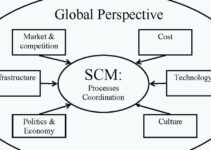Procurement is the method of buying goods for your business at the most suitable price while maintaining the standard delivery time and high quality. Businesses and companies employ various strategies relevant to their budget in order to get what they need and want. Today, we’ll discuss procurement strategies in supply chain management; its various types, and various strategies.
What are Procurement Strategies in Supply Chain Management?
Procurement strategies in supply chain management are the practices that companies employ to buy products and services for their business. They allow companies to gain the best deal for their capital while maintaining delivery time and high-quality standards. However, it comprises approaches and practices that would help you to find the most suitable supplier; negotiate the best possible price, and close the deal of purchasing.
It is significant that companies should have a purchasing strategy that would help them to save time and capital resources and make sure that they would get the best possible deal. Businesses have various strategies and practices to opt from; the key is to select the right strategy that is relevant to your budget, business size, and the types of goods you need.
Some of the main elements of the successful procuring process are as follows;
- Collecting innovative systems for your company
- Predictive analytics to establish capacity
- Centralized database of suppliers
- Supplier risk management
- Procurement chain flow
Types of Procurement Strategies in SCM
Some of the main types of procurement strategies in supply chain management are as follows;
Supplier Management & Optimization
The focus of supplier management and optimization is to establish working and professional relationships with suppliers to amplify the performance. It helps companies to amplify the quality of their purchase and make sure that they are receiving the best possible deal from their suppliers. However, it comprises of developing following;
- Supplier performance standards
- Auditing
- Offering support and training
Total Quality Management
Total quality management makes sure that the bought goods and services are up to the highest quality standards. It is significant for companies that want to avoid purchasing issues and make sure that they receive the best possible value out of it. However, it comprises of following;
- Launching quality control measures
- Conducting analysis and inspection
- Establishing quality standards
Global Sourcing
Global sourcing comprises purchasing products and services from worldwide suppliers. It is a great option for such companies that want to gain the best price. However, it allows companies to decrease the risk factor by diversifying the supplier database. It helps companies to enter new markets and look for new and creative products.
Risk Management
The focus of the risk management strategy is to decrease the risk factor relevant to the purchasing of products and services. It is significant for companies that want to avoid the problems of purchasing. However, it comprises of following;
- Recognizing and analyzing risk factors
- Developing risk-sharing deals with suppliers
- Establishing contingency plans
Green Purchasing
The focus of green purchasing is to procure products and services that would have a limited impact on the environment. It is significant for companies that want to decrease the environment by reducing the carbon emission rate and engaging in sustainable practices. However, it comprises of taking the following steps;
- Energy-efficient products
- Lower carbon emission rate
- Using recyclable material for products
Reducing Cost
It helps companies to save their capital resources. It is significant for companies that are familiar with their existing cost and recognize the areas that would help them to save money. They could decrease costs by taking the following steps;
- Streamline their purchasing process
- Finding cheaper sources
- Negotiating with suppliers
Procurement Strategies in Supply Chain Management – Top 5
Some of the top 5 procurement strategies in supply chain management are as follows;
Integrating Procurement Process
Companies could employ various strategies to improve the performance of their purchasing process. Some employ low-cost and low-spending strategies, and others focus on improving their invoicing process. The focus of procurement strategy should always be on improving the movement and flow of the whole procuring process; from sourcing suppliers to paying invoices.
Supplier Risk Management
If the company is following an aggressive pricing procurement strategy, then it carries a lot of risk. This venture is suitable for companies if the supplier failure result is limited to the context of supplies. Companies should avoid any type or form of systematic risk.
For instance, if you are risking with a supplier for supplies that you can easily receive within a day, then it is a good strategy. If you employ this strategy during the peak production and manufacturing season, then it would be an unavoidable risk.
Centralizing Supplier Data
The international group procurement strategy employs data from various sources to record and document; a description of their products, mapping their location, and innovation strategy for suppliers. However, gathering the data into a single database offers you a strong push to amplify your procuring strategy. The supplier intelligence process would only work in the availability of a centralized database, and it allows you to analyze it comprehensively.
Predictive Analytics
Predictive analytics is a great tool for companies and it employs AI (artificial intelligence) and big data. It is an ambitious strategic approach that can’t avoid the latest technological trends. According to a study by Aberdeen Group, more than 20% of companies implement this strategy annually.
Innovation System
Market leader companies give innovation the top priority because it helps them gain a competitive edge and exploit the opportunity to generate value. Resultantly, the procuring unit would develop an effective procuring strategy, and it allows companies to develop intelligence processes.
Conclusion: Procurement Strategies in Supply Chain Management
After an in-depth study of the procurement strategies in supply chain management; we have realized that procuring strategies are highly beneficial for companies. If you are learning about the procurement strategies in SCM, then you should keep in mind the abovementioned various types, elements, and top 5 strategies.
Ahsan is an accomplished researcher and has a deep insight in worldly life affairs. He goes Live 3 days a week on various social media platforms. Other than research writing, he’s a very interesting person.


